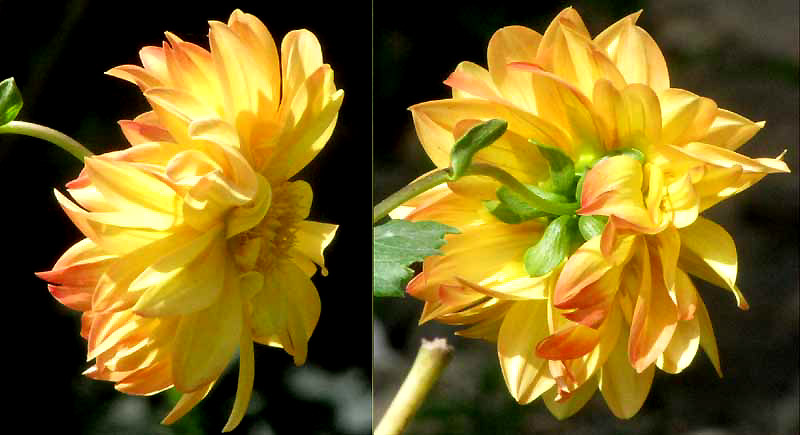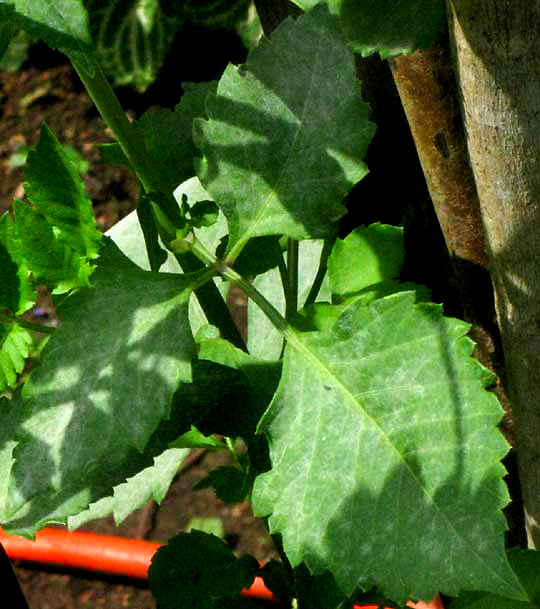Excerpts from Jim Conrad's
Naturalist Newsletter

from the March 18, 2012 Newsletter issued from Hacienda Chichen Resort beside Chichén Itzá Ruins; limestone bedrock; elevation ~39m (~128ft), N20.675°, W88.569°; central Yucatán state, MÉXICO
DAHLIAS
Dahlias are native from upland southern Mexico (not the Yucatán) south through Central America to Columbia; they are Mexico's national flower. The other day in a garden in backstreet Pisté I saw the one shown above. Both side and back views are shown. In the back view at the right, notice that the blossom's yellow ray flowers are subtended by a green involucre. If the terms "ray flower" and " involucre" confuse you, you may want to review our Composite Flower webpage at www.backyardnature.net/fl_comps.htm.
To help distinguish dahlia flowers from similar common garden composite flowers such as chrysanthemums and zinnias, it's worth noticing that dahlia-flower involucres are composed of thicker but narrower outer bracts and thinner but broader inner bracts, as shown below:

Also, dahlia leaves are opposite (two per stem node) and "odd pinnate." The leaves of our Pisté plant are three-pinnate, or trifoliate, as shown below:

In tropical America at least 36 wild dahlia species are recognized, and in the gardening world there are hundreds of cultivars, largely hybrids. There's much disagreement about how dahlias should be named. On the Internet some authorities use the name DAHLIA x GENERALIS to refer to garden varieties in general.
You might enjoy the webpage "A Timeline of Important Dates in Dahlia Cultivation and Hybridizations" presented by the Stanford Dahlia Project.